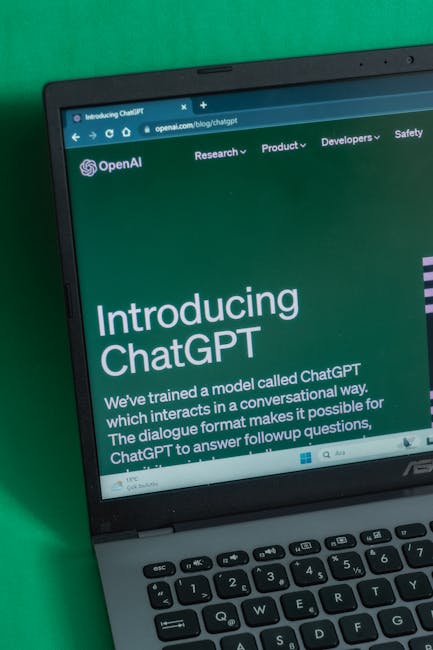How Google AI Shopping Updates Will Transform Holiday E-commerce
Google launched a major set of shopping-focused AI features ahead of the holiday season designed to reduce friction across the buyer journey. From conversational product search to agentic checkout and AI-driven local inventory calls, these updates aim to keep the joy of discovery while automating tedious tasks like price tracking and availability checks.
What are the key Google AI shopping updates?
The new suite centers on three high-impact capabilities that change how consumers search, compare, and buy products online:
- Conversational shopping in AI Mode: Natural language product queries with tailored, visual or tabular responses.
- Agentic checkout: An automated purchase flow that can monitor price changes and complete payments through Google Pay with user approval.
- AI local inventory calls: An assistant that calls nearby stores to confirm stock, pricing, and promotions for the user.
Behind these experiences is Google’s Shopping Graph and payments infrastructure, which provide product listings, inventory signals, and secure checkout primitives. The aim is to combine discovery and convenience so shoppers spend less time on repetitive tasks and more time exploring options that matter.
How does conversational shopping work?
Conversational shopping uses Google’s AI Mode to let users ask detailed, natural-language questions and receive context-aware replies. Depending on the query, the response may prioritize imagery, comparison tables, price history, reviews, or inventory information.
When visuals matter
For discovery-driven queries—like “cozy sweaters in autumn tones”—the AI returns visual inspiration alongside product links and available sizes. This preserves the browsing and serendipitous elements that make shopping enjoyable while offering direct paths to purchase.
When comparisons help
For comparison queries—such as skincare routines or feature-by-feature product choices—the system can present concise comparison tables summarizing ingredients, specs, price, and ratings so users can scan options quickly.
Semantic variations and what they mean for SEO
Conversational shopping also surfaces semantic variations of queries—”AI-powered product suggestions,” “shopping chat,” and “conversational product discovery”—which affects how retailers optimize titles, descriptions, and structured data. Rich, descriptive product content and up-to-date inventory signals help listings appear in these conversational responses.
What is agentic checkout and why does it matter?
Agentic checkout automates parts of the purchase process on behalf of a user while preserving explicit consent and transparency. Users can track prices on items they want; once a target price is met, Google can initiate the purchase on the merchant site using Google Pay, after confirming purchase and shipping details with the customer.
Practical benefits for shoppers
- No constant price monitoring—set alerts and let the agent act.
- Fewer abandoned searches—automation helps convert intent into completed purchases.
- Secure payments—transactions use Google Pay and require user confirmation before completion.
What retailers should know
Agentic checkout integrates directly with participating merchants and platforms, enabling frictionless conversions while returning customers to the merchant’s site. Merchants can opt in to take advantage of more committed shoppers who set price alerts and expect quick completion when a deal appears.
How do AI-powered local inventory calls work?
One of the more practical updates is an AI assistant that can call local stores to verify product availability, price, and promotions. After a user provides product details, the assistant places calls on the user’s behalf and returns a concise summary of findings.
Use cases where this shines
- Last-minute gift shopping: quickly confirm if a nearby store has the item in stock.
- Limited-availability electronics or toys: compare inventory across several stores without dialing multiple numbers.
- Local promotions: identify store-level deals that aren’t always reflected online.
The feature is mindful of merchant experience—calls disclose that an AI is asking and are limited in frequency. Retailers can opt out if they prefer not to receive these calls.
Will these updates include ads and sponsored listings?
Yes—sponsored listings will appear in AI Mode responses. Google has indicated that ad formats will be integrated thoughtfully as these features evolve. For businesses, this reinforces the importance of advertising and organic optimization to ensure visibility within conversational and agentic experiences.
How should retailers prepare for this shift?
Retailers and brands should take several practical steps to remain competitive as Google’s AI shopping experiences roll out:
- Keep product feeds and inventory data accurate and frequently updated.
- Enhance product descriptions with clear, structured details and semantic keywords aligned to conversational queries.
- Enable and test Google Pay and supported checkout integrations to capture agentic conversions.
- Monitor ad placements in AI Mode and adapt bids and creatives for conversational contexts.
- Train customer support and phone staff to handle AI-facilitated calls and disclosures when required.
These steps will help merchants maximize visibility and conversion in an environment where discovery and automated action increasingly intersect.
How will this change the consumer experience during the holidays?
During peak shopping periods, customers value speed and certainty. Features like agentic checkout and local inventory calls reduce the friction that often drives shoppers to abandon a search or settle for suboptimal options. Conversational responses help shoppers discover curated selections without sifting through pages of search results.
In short, the updates are designed to:
- Preserve the joy of browsing with richer discovery tools.
- Automate repetitive tasks like price monitoring and local availability checks.
- Convert intent into purchases faster through secure, consent-driven automation.
Is this secure and privacy-friendly?
Google emphasizes consent and transparency: agentic actions require user confirmation, payment uses secure infrastructure, and AI calls disclose their nature to merchants. Retailers and consumers should still review privacy policies, opt-out options, and disclosure settings to ensure the level of automation fits their preferences and compliance needs.
How do these updates relate to broader trends in AI agents and commerce?
Google’s push toward agentic shopping fits within a wider industry movement toward AI agents that act on user intent—reducing repetitive work while preserving user control. For deeper context on agentic systems and multi-agent platforms, see our coverage on Customer-Facing AI Agents: Scaling Global Multi-Agent Platforms and the risks and fragile behaviors explored in AI Agent Simulation Environment: Revealing Fragile Behaviors.
You can also compare Google’s approach to agentic tools described in other platform updates, such as how booking and reservation tools are being integrated into conversational modes in our piece on Google AI Mode Adds Agentic Booking and Reservation Tools.
What should consumers ask before enabling agentic features?
Before allowing any AI to act on your behalf, consider these questions:
- What permissions are required and how easy is it to revoke them?
- How will payment and shipping details be secured and confirmed?
- Will the AI clearly disclose actions taken on my behalf?
- Are there opt-out choices for local inventory calls or other automated interactions?
Clear answers to these points help users trust automation and make confident choices during high-stakes shopping windows like the holidays.
Summary: What this means for shoppers and merchants
Google’s AI shopping updates aim to streamline both discovery and conversion. For shoppers, the benefits are faster discovery, fewer repetitive tasks, and a smoother route from inspiration to purchase. For merchants, accurate inventory, robust product feeds, and readiness for agentic checkout are critical to capture demand.
The evolution of conversational shopping and agentic features signals that search and commerce are converging: search is becoming an active partner in the purchase flow rather than a passive destination. Businesses that adapt their feeds, checkout flows, and ad strategies will have an advantage as these AI-driven experiences scale.
Next steps for businesses
- Audit product feeds and inventory cadence.
- Enable supported payment integrations and test end-to-end flows.
- Update product copy with conversational keywords and structured data.
- Monitor performance in AI Mode and refine ad strategies for conversational contexts.
If you manage e-commerce or digital marketing, prioritizing these tasks now will help you capture more holiday conversions and position your business for the next wave of AI-assisted shopping experiences.
Ready to optimize for AI-driven shopping?
Don’t wait for peak season—start updating product data, testing agentic checkout flows, and refining ad creative for conversational contexts today. Our in-depth guides and coverage on AI commerce and agentic systems can help you prepare and adapt.
Call to action: Subscribe to Artificial Intel News for ongoing analysis and step-by-step tactics to optimize your store for Google’s AI shopping updates—get expert briefings and practical checklists delivered weekly.






